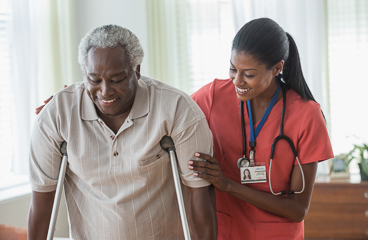
What's important to know about injury recovery?
Recovery from an injury takes time. Healing can take longer than you want it to. You may be tempted to return to your normal activities before you have fully healed.
But stressing an injury makes it take even longer to heal. And you could make your injury worse than it's ever been.
An injury heals fastest when you give it the rest and special care it needs. Your doctor can help you know when you're ready to ease back into normal activity.
How can you help an injury heal?
You can speed up healing by avoiding movements that make it worse. It's also important to follow your doctor's instructions.
- Ask your doctor if you can take an over-the-counter pain medicine, such as acetaminophen (Tylenol), ibuprofen (Advil, Motrin), or naproxen (Aleve). Be safe with medicines. Read and follow all instructions on the label.
- Put ice or a cold pack on the area for 10 to 20 minutes at a time to ease pain. Put a thin cloth between the ice and your skin.
- If your doctor gave you a splint, a pair of crutches, or a sling, use it exactly as directed.
Physical or occupational therapy can help you learn how to move in new ways and to recover from an injury. If you are given exercises to do, ease into them. Start each exercise slowly. Ease off an exercise if you start to have pain. When you have a routine of exercises, do them as often and as long as prescribed.
While you heal, it also helps to keep the rest of your body moving. A physical therapist can suggest other exercises or ways of doing things to keep up your strength and energy.
How do you return to activity?
Slowly ease back into normal activity so you don't injure yourself again. A reinjury can be harder to heal than an original injury.
If you are getting back into a sport, do it step by step. A trainer or physical therapist can help you do this safely. Start with short, easy movements or workouts. Then slowly add more over time.
- Warm up before and stretch after the activity.
- Stop what you're doing if it hurts.
- When you're done, use ice to prevent pain and swelling.
It may help to make some changes. For example, if a sport caused tendon pain, try another one for a while. If using a tool causes pain, change your grip or use the other hand.
Current as of: October 1, 2025
Author: Ignite Healthwise, LLC Staff
Clinical Review Board
All Ignite Healthwise, LLC education is reviewed by a team that includes physicians, nurses, advanced practitioners, registered dieticians, and other healthcare professionals.

